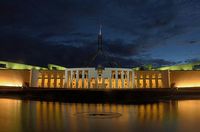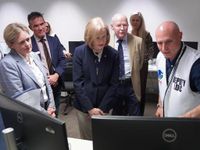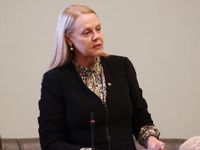In the wake of Tropical Cyclone Alfred, Queensland communities have displayed remarkable resilience, showcasing their collective determination and preparedness in the face of disaster. Both Noosa and Redlands Coast have shared heartwarming stories of community response and recovery as they navigate the impact of the cyclone.
Noosa experienced the effects of Cyclone Alfred relatively mildly, a stroke of fortune compared to the more severe impacts faced by neighboring areas. As highlighted in recent statements from local authorities, residents were relieved to receive minimal damage, especially in light of their experiences during devastating fires in 2019 and floods in 2022. Noosa's proactive approach to disaster preparedness has proven invaluable, as local officials emphasized the importance of being ready for such events to protect lives and property.
During a recent parliamentary address, Noosa MP Sandy Bolton expressed her gratitude to frontline workers and volunteers who contributed significantly to the community's safety while Cyclone Alfred approached. “It takes a big team effort, and we have the most awesome team, and you are all deeply appreciated,” said Bolton. This heartfelt acknowledgment encompassed everyone from the Local Disaster Management Group to selfless individuals who helped their neighbors prepare for the storm.
Parallel to these local efforts, Redland City Council has been assessing the heroic community response to Cyclone Alfred. Mayor Jos Mitchell, chair of the Local Disaster Management Group, described the preceding weeks as a “whole-of-city effort.” He noted the valuable coordination among more than 47 agencies, including the Queensland Fire Department and State Emergency Services, which allowed residents to remain informed and safe as the cyclone approached.
From February 25 to March 16, the council maintained vigilant preparations, distributing over 155,000 sandbags and responding to nearly 1,200 jobs throughout the cyclone. “The cyclone tested our preparedness, but it also highlighted the resilience and close-knit spirit of our communities,” said Mitchell, demonstrating the essential role of collaboration in disaster management.
Despite the challenges presented by Cyclone Alfred, various agencies worked tirelessly to ensure safety and provide crucial support. Energex reported that over 41,000 customers were left without power, 9000 of whom were residents in isolated island communities. The timely activation of places of refuge showed how preparedness enabled the council to assist communities in their time of need.
The fallout from the powerful storm saw the Lesley Harrison Dam spill after reaching absurd levels of 187.6 percent capacity. When the communities experienced flooding from high water levels, council actions included opening six emergency facilities to shelter 47 residents who could not stay at home safely. The proactive measures undoubtedly minimized dangers and risks.
Efforts to maintain community services continued post-cyclone. The Redlands City Council reopened libraries, witnessed unprecedented visitation levels, and launched kerbside green waste collection in response to increased refuse. This swift engagement with public facilities was a testament to the government’s commitment to keeping the community functional.
Moreover, in Noosa, support for residents affected by Cyclone Alfred is becoming more available, with local authorities urging residents to seek help through the Disaster Recovery Allowance for loss of income. “This support is vital for those impacted, and it is a reminder of the necessity to be ready for the unexpected,” Bolton explained.
The state government has also taken significant steps toward long-term improvement by promising relief packages and infrastructure investments. With the need for comprehensive disaster preparedness growing more acute after Cyclone Alfred, there's a pressing call for further advocacy aimed at funding improvements such as a dedicated disaster coordination center and advanced flood warning infrastructure. Such measures are essential for better managing future challenges.
In an effort to gather community input on addressing important issues, Noosa's local officials are actively inviting residents to participate in surveys concerning fluoridation and other public health topics to ensure constituents can voice their concerns.
While Cyclone Alfred served as a painful reminder of nature’s unpredictability, the resilient responses from Noosa and Redlands Coast highlight the importance of community strength and preparedness. Local leaders, volunteers, and frontline workers have laid the groundwork for recovery, showcasing how collaboration can lead to a stronger, more united Queensland. As they move forward, ongoing engagement and advocacy will be crucial to mitigating the impact of future disasters.
Funding for essential infrastructure, streamlined recovery efforts, and mental health support services will remain at the forefront of discussions within both councils, ensuring that community members can seek the assistance necessary to restore normalcy in their lives.
As discussions on future improvements continue, officials remain optimistic. To keep the momentum of collective action alive, both Noosa and Redlands require residents to stay connected, informed, and motivated. “It genuinely has been heartening to see everyone come together to help our city and our residents get back on their feet,” concluded Mayor Mitchell, reiterating the extraordinary community spirit alive in Queensland.






